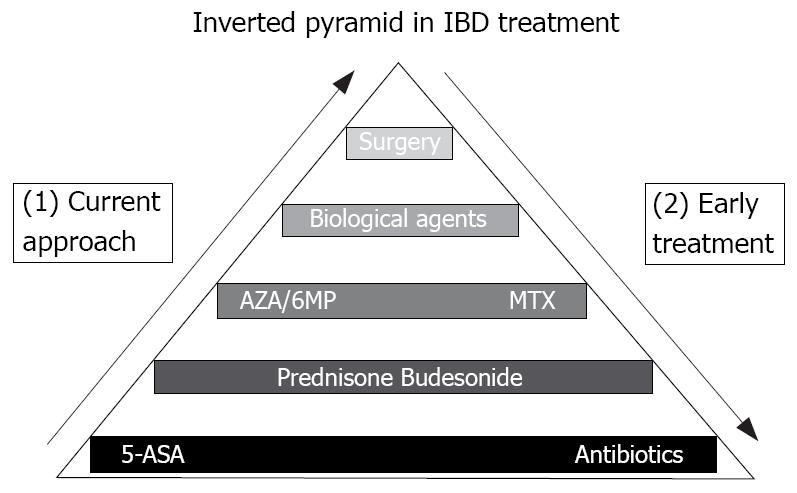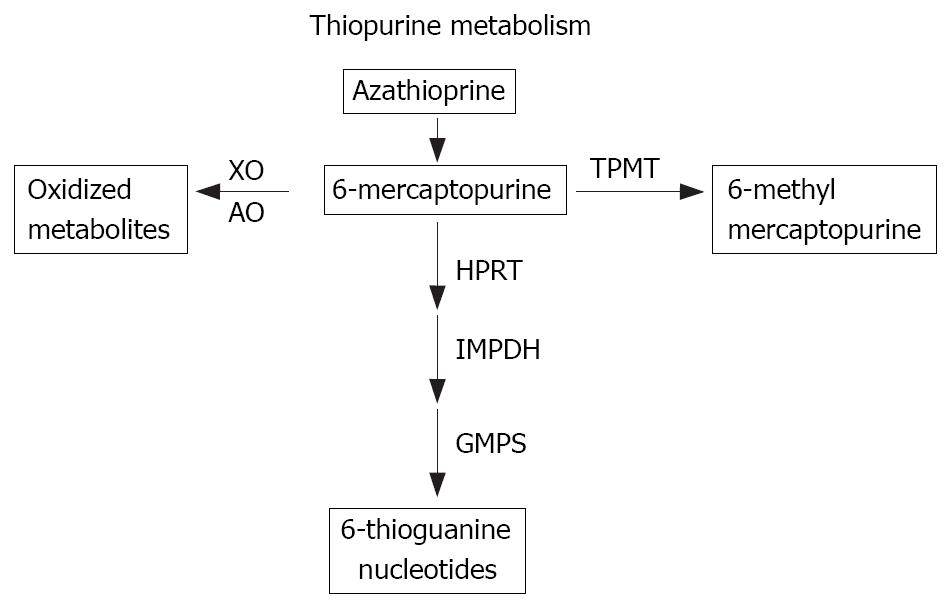Copyright
©2008 The WJG Press and Baishideng.
World J Gastroenterol. Sep 28, 2008; 14(36): 5512-5518
Published online Sep 28, 2008. doi: 10.3748/wjg.14.5512
Published online Sep 28, 2008. doi: 10.3748/wjg.14.5512
Figure 1 Inverted pyramid.
Represents two different treatments approaches in IBD: (1) Current practice: Initially treatment with 5-ASA and antibiotics and then depends on the responsiveness scale to steroids, immunomodulators and biological agents. (2) Top-Down strategy: New tendencies. Initially aggressive treatment with early immunosuppresion and biological therapy.
Figure 2 Metabolism of azathioprine (AZA): AZA is converted to 6-mercaptopurine (6-MP).
6-MP by thiopurine methyltransferase (TPMT) and xantino oxidase (XO) in inactive metabolites, but phosphoriboxyltransferase (HPRT), inosine monophosphate dehydrogenase (IMPDH) and guanosine monophosphate synthetase (GMPS) catalize the synthesis of active 6-thioguanine nucleotides (6-TGNs).
- Citation: Etchevers MJ, Aceituno M, Sans M. Are we giving azathioprine too late? The case for early immunomodulation in inflammatory bowel disease. World J Gastroenterol 2008; 14(36): 5512-5518
- URL: https://www.wjgnet.com/1007-9327/full/v14/i36/5512.htm
- DOI: https://dx.doi.org/10.3748/wjg.14.5512














